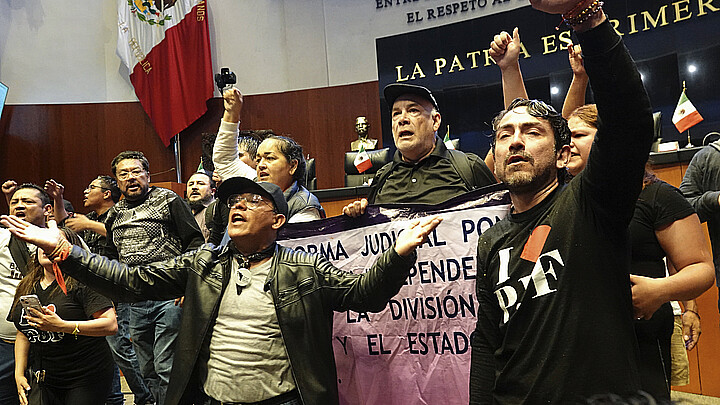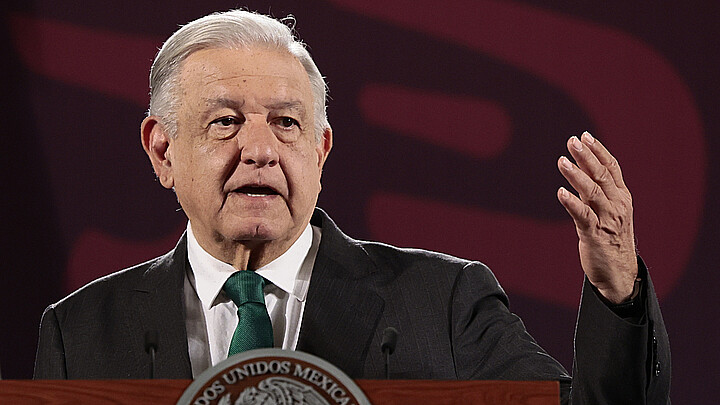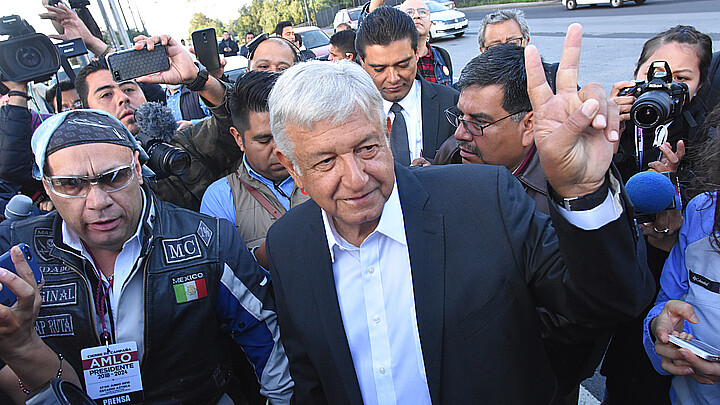Politics
Indigenous activists tear down historical statues in Mexican state of Michoacán
Indigenous activists in the Mexican state of Michoacán used axes, sledgehammers and rope on Monday to topple statues that they claimed depicted their ancestors being exploited by Spaniards during colonial times
February 15, 2022 3:42pm
Updated: February 15, 2022 6:08pm
Across the United States, statues of newly-controversial historical figures have been vandalized and torn down in recent years.
Almost ironically, it was announced in June 2020 that the statue of Columbus that stands in front of Columbus, Ohio’s City Hall was to be removed and replaced with a commissioned piece representative of diversity and inclusion.
“For many people in our community, the statue represents patriarchy, oppression, and divisiveness,” Columbus Mayor Andrew Ginther said at the time, adding that “now is the right time to replace this statue with artwork that demonstrates our enduring fight to end racism.”
But until recently, the tearing down of statues deemed offensive was primarily a U.S. American affair and had not made its way across our nation’s southern border.
That seems to be changing, however, and indigenous activists in the Mexican state of Michoacán used axes, sledgehammers and rope on Monday to topple statues that they claimed depicted their ancestors being exploited by Spaniards during colonial times.
According to a report by Mexico News Daily, members of the Supreme Indigenous Council of Michoacán tore down statues of Fray Antonio de San Miguel, a former bishop of Michoacán, and a Spanish town planner known as Alarife after activists claimed their statues depicted a scene of indigenous abuse.
Videos posted to social media showed a large group of people in the city of Morelia pulling a rope placed around the neck of Fray Antonio’s neck until the likeness of the 18th century bishop finally came crashing down before being beheaded by the crowd, El Universal reported.
For months now, indigenous activists have asked city officials to remove the statues which they claim promoted “racism and discrimination” and in a statement, the council noted that “2022 marks 500 years since the conquest and invasion of Michoacán” by the Spanish.
“During the invasion of what is today Michoacán, the Spanish enslaved thousands of indigenous people. Five hundred years after the invasion of Michoacán, the indigenous people continue to resist and fight as our grandfathers did,” the statement further read.
But the state’s cultural heritage authority defended the monument in a statement issued in 2020.
“You just have to read the simple and clear plaque on the monument to feel pride in our city, the birthplace of great thinkers,” the statement said before denying that Morelia was built with slave labor.
Ramón Sánchez Reyna, a historian and professor at the Michoacán University of Saint Nicholas of Hidalgo, added to the voices of support for the city’s cultural heritage and lamented that the destruction of the statues amounts to a loss of tangible heritage in Morelia.
He told the news website Contramuro that social memory is not erased with such actions and asserted that the activists should seek alternative ways to build support for their cause.
The historian further acknowledged that the toppling of statues of historical figures in Morelia is part of a trend that has been seen in Europe and the United States.
In Mexico City, a statue of Christopher Columbus was removed in late 2020 after protesters threatened to knock it down on the Day of Race. City officials subsequently announced that the statue would be relocated and a replica of a pre-Hispanic sculpture of an unknown indigenous woman would be installed on Reforma Avenue.
The director of the National Institute of Anthropology and History said last October that the relocation of the Columbus effigy was an attempt to protect it.
“This was based, not on any ideological judgement of the character [of Columbus]. … If it had been left in place, it would have been the target of threats and protests,” Diego Prieto said.










